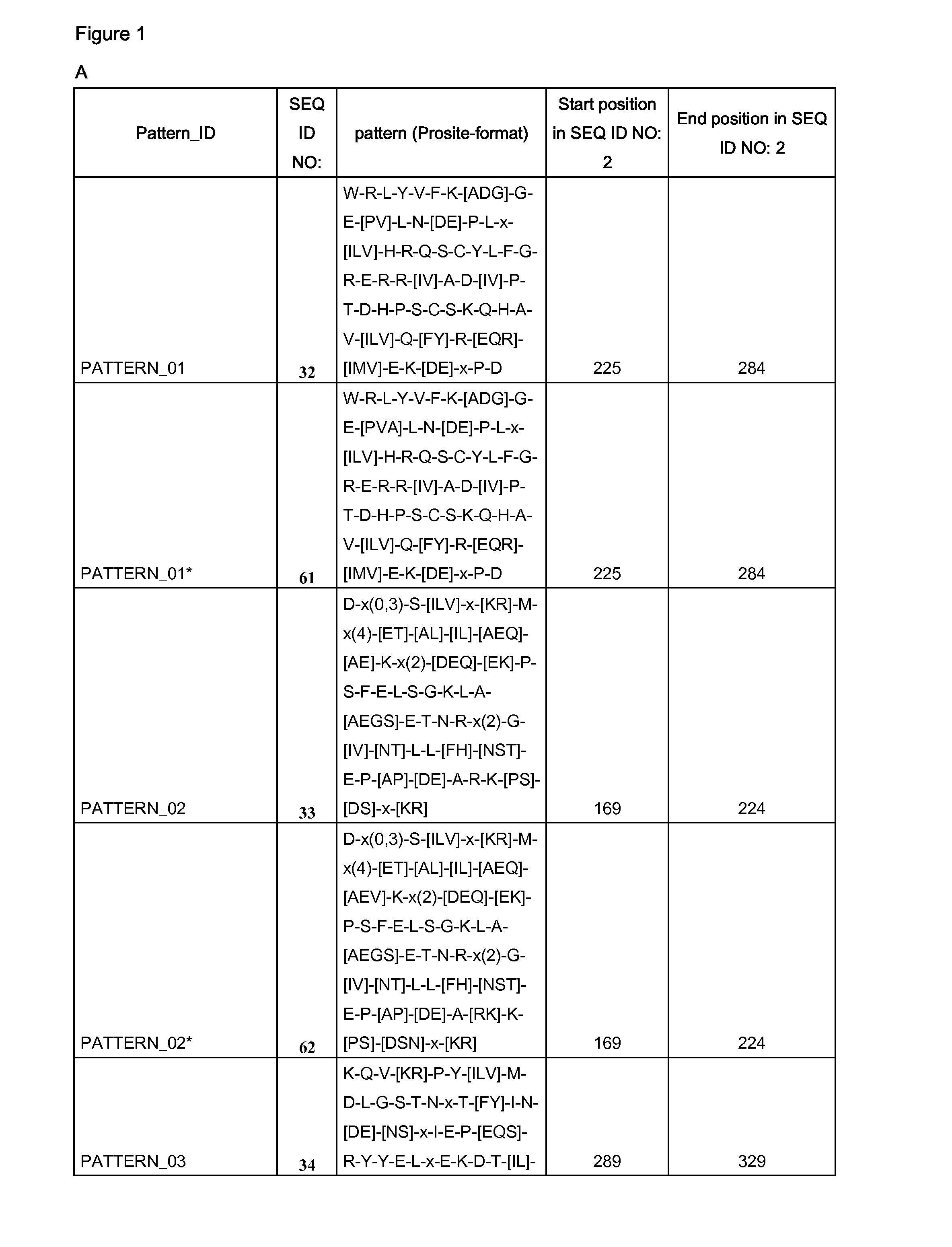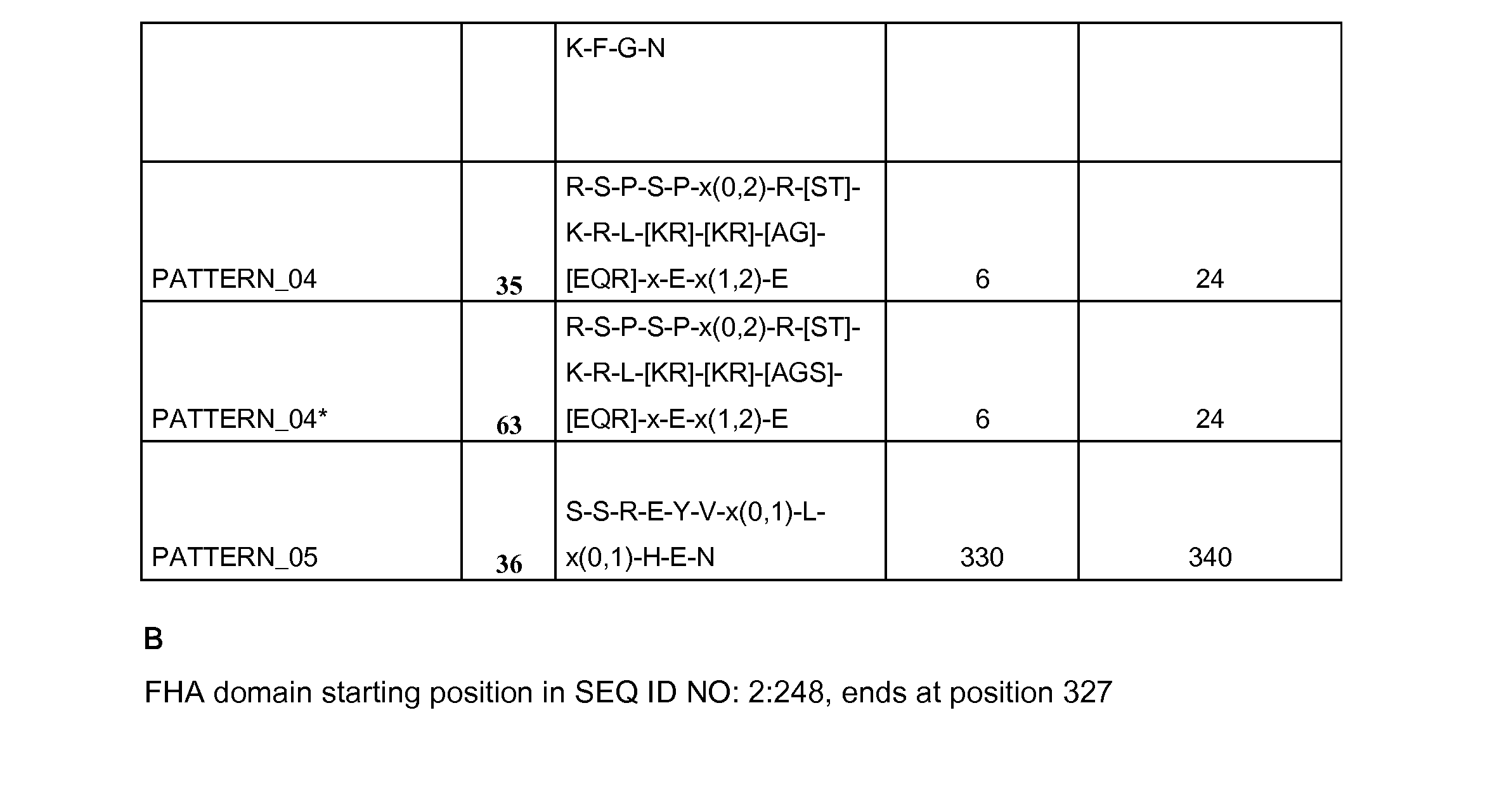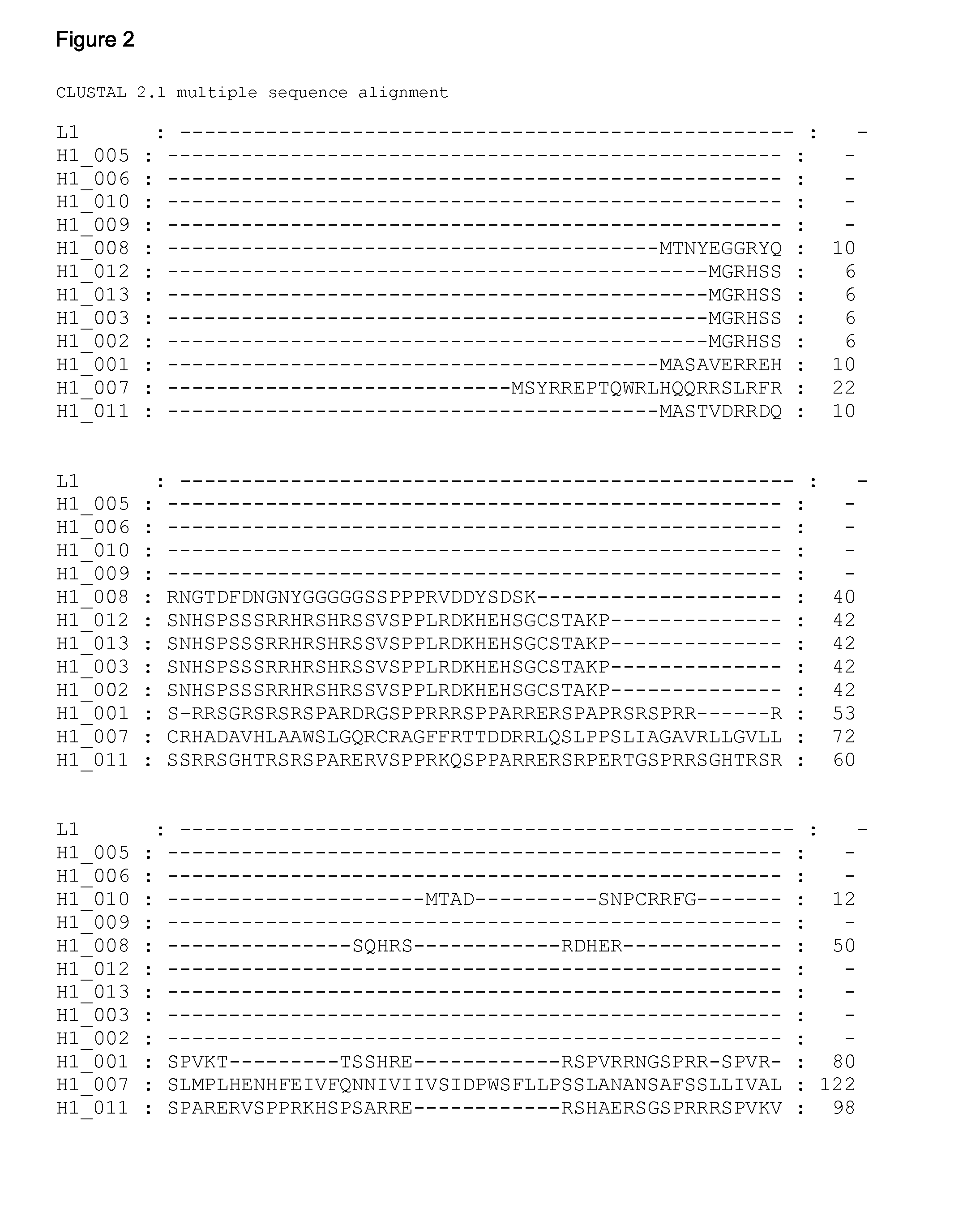Plants having one or more enhanced yield-related traits and method for making same
- Summary
- Abstract
- Description
- Claims
- Application Information
AI Technical Summary
Benefits of technology
Problems solved by technology
Method used
Image
Examples
example 1
Identification of Sequences Related to SEQ ID NO: 1 and SEQ ID NO: 2
[0539]Sequences (full length cDNA, ESTs or genomic) related to SEQ ID NO: 1 and SEQ ID NO: 2 were identified amongst those maintained in the Entrez Nucleotides database at the National Center for Biotechnology Information (NCBI) using database sequence search tools, such as the Basic Local Alignment Tool (BLAST) (Altschul et al. (1990) J. Mol. Biol. 215:403-410; and Altschul et al. (1997) Nucleic Acids Res. 25:3389-3402). The program is used to find regions of local similarity between sequences by comparing nucleic acid or polypeptide sequences to sequence databases and by calculating the statistical significance of matches. For example, the polypeptide encoded by the nucleic acid of SEQ ID NO: 1 was used for the TBLASTN algorithm, with default settings and the filter to ignore low complexity sequences set off. The output of the analysis was viewed by pairwise comparison, and ranked according to the probability scor...
example 2
Alignment of DDLLP Polypeptide Sequences
[0543]The alignment was performed with the software ClustalW (version 1.83) and is described by Thompson et al. (Nucleic Acids Research 22, 4673 (1994)). The source code for the stand-alone program is public available from the European Molecular Biology Laboratory; Heidelberg, Germany. The analysis was performed using the default parameters of ClustalW v1.83 (gap open penalty: 10.0; gap extension penalty: 0.2; protein matrix: Gonnet; protein / DNA endgap: −1; protein / DNA gapdist: 4). Minor manual editing was done to further optimise the alignment. The DDLLP polypeptides are aligned in FIG. 2.
[0544]A phylogenetic tree of DDLLP polypeptides (FIG. 3) was constructed by aligning DDLLP sequences using AlignX of the VectorNTl software suite (Invitrogen, part of Life Technologies GmbH, Frankfurter StraBe 129B, 64293 Darmstadt, Germany) with standard settings. The guide tree produced during ClustalW-alignment (parameters as shown above) was used: The mu...
example 3
Calculation of Global Percentage Identity Between Polypeptide Sequences
[0545]Global percentages of similarity and identity between full length polypeptide sequences useful in performing the methods of the invention were determined program “needle” from the EMBOSS software collection (The European Molecular Biology Open Software Suite; http: / / www.ebi.ac.uk / Tools / psa / );
[0546]Results of the analysis are shown in FIG. 4 with global similarity and identity percentages over the full length of the polypeptide sequences. Sequence similarity is shown in the bottom half of the dividing line and sequence identity is shown in the top half of the diagonal dividing line. Parameters used in the analysis were: -gapopen 10.0-gapextend 0.5, matrix: BLOSUM62. The sequence identity (in %) between the DDLLP polypeptide sequences useful in performing the methods of the invention can be as low as 39.5%, but is generally higher than 50%) compared to SEQ ID NO: 2.
[0547]Based on a multiple alignment of DDLLP...
PUM
| Property | Measurement | Unit |
|---|---|---|
| Fraction | aaaaa | aaaaa |
| Fraction | aaaaa | aaaaa |
| Fraction | aaaaa | aaaaa |
Abstract
Description
Claims
Application Information
 Login to View More
Login to View More - R&D
- Intellectual Property
- Life Sciences
- Materials
- Tech Scout
- Unparalleled Data Quality
- Higher Quality Content
- 60% Fewer Hallucinations
Browse by: Latest US Patents, China's latest patents, Technical Efficacy Thesaurus, Application Domain, Technology Topic, Popular Technical Reports.
© 2025 PatSnap. All rights reserved.Legal|Privacy policy|Modern Slavery Act Transparency Statement|Sitemap|About US| Contact US: help@patsnap.com



